People came into this season not expecting much from Real Madrid after losing Karim Benzema over the summer and could not recruit Kylian Mbappé or another big-name attacking player.
The biggest signing was Jude Bellingham, who arrived from Borussia Dortmund and added one more midfield option for Carlo Ancelotti — but the squad already had a selection of very high-quality midfielders in Toni Kroos, Luka Modrić, Eduardo Camavinga, Aurilien Tchouaméni, and Federico Valverde.
Since only 11 players can start a football match, finding the right balance in his selection of midfielders became Ancelotti’s biggest task to lead the team to another UEFA Champions League trophy. This tactical analysis is going to examine and compare these very talented midfielders and explore what Ancelotti has tried so far.
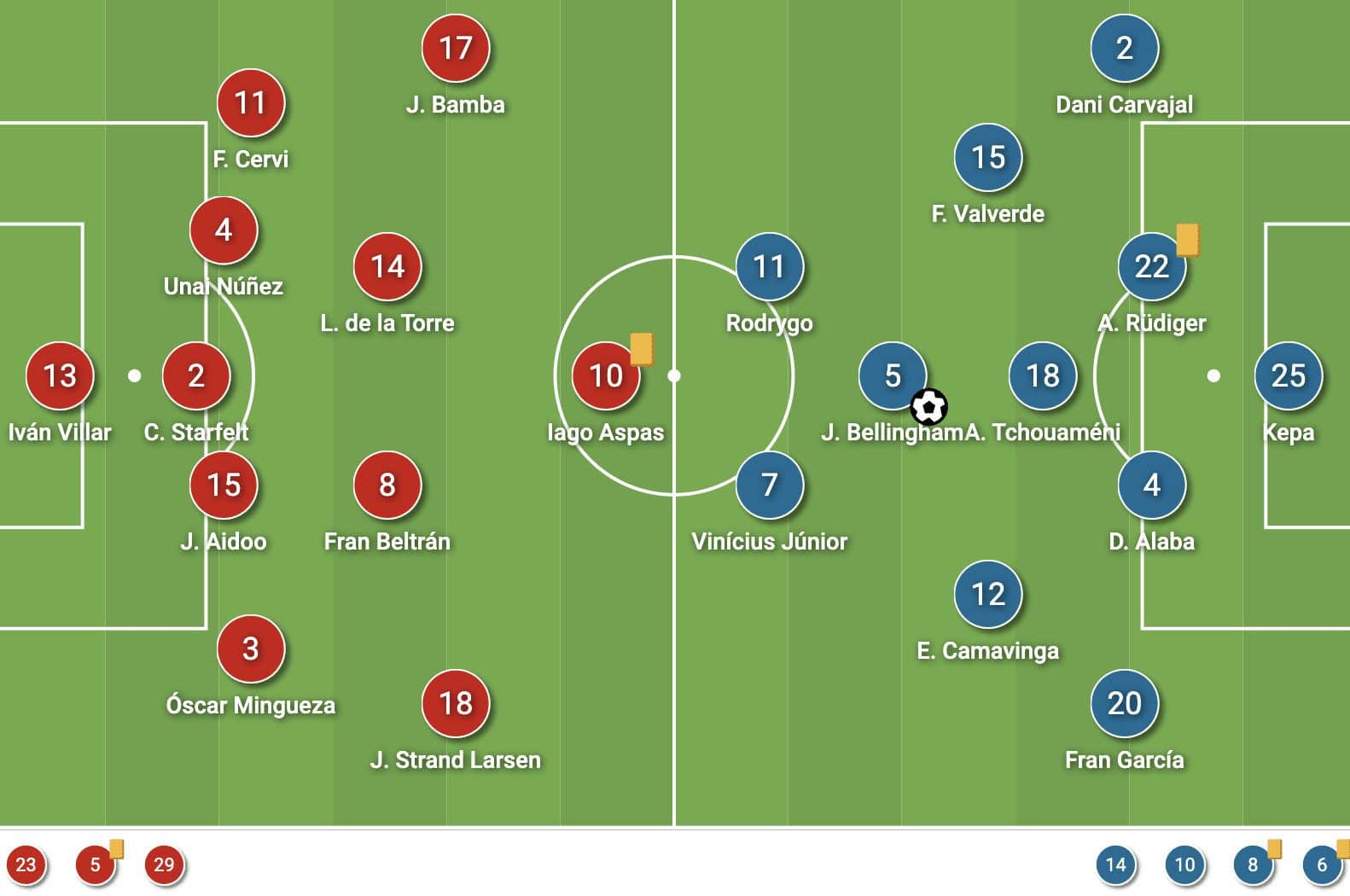
At the very beginning of the season, Ancelotti dropped both Modrić and Kroos from the starting XI and opted for a diamond midfield on paper with Tchouaméni as the base, Camavinga and Valverde as the 8s, and Bellingham supporting behind strikers.
However, their slow performances at Celta Vigo and Athletic Club did not inspire confidence in this approach. Real Madrid lacked organisation in the possession phases until Modrić or Kroos came onto the pitch. Since then, Ancelotti has played at least one of Modrić or Kroos in the starting lineup, but not both of them (except in the Madrid derby where Real Madrid lost 1-3 to Atlético Madrid).
Build-up contributions
Before looking into and comparing the midfielders, we must understand the context of Real Madrid as a club and its culture. Unlike their rivals Barcelona, Real Madrid don’t subscribe to a specific philosophy of play.
Coaches with very detailed planning tactics and training methodologies (such as Rafa Benítez and Julen Lopetegui) might struggle as the most critical part is that the players sometimes don’t want to take too much instruction and prefer to play their own football, but it is not equivalent to total freedom, Real Madrid requires harmony from the players.

Translating this back to the pitch, our analysis shows that Real Madrid are not a positional team that looks to hold a particular type of structure or player obeying their pre-defined space in possession and waiting for the ball.
Instead, Ancelotti gives his players a lot of freedom as he trusts their quality and judgment on the pitch. So Real Madrid would never be trying to attack via a structure 3-2-2-3, 3-2-5 — even the 4-D-2, on paper, is inaccurate because they were doing something else.
In this screenshot versus Napoli in the UEFA Champions League, we could see eight Real Madrid players crowding on the left flank — they lacked the natural width if we viewed them in a positional framework and could not stretch the opponent’s defence.
But Ancelotti wouldn’t care, as he allows his team to play this way. This created an 8v5 numerical advantage around the ball when Napoli’s side players did not shuffle across.
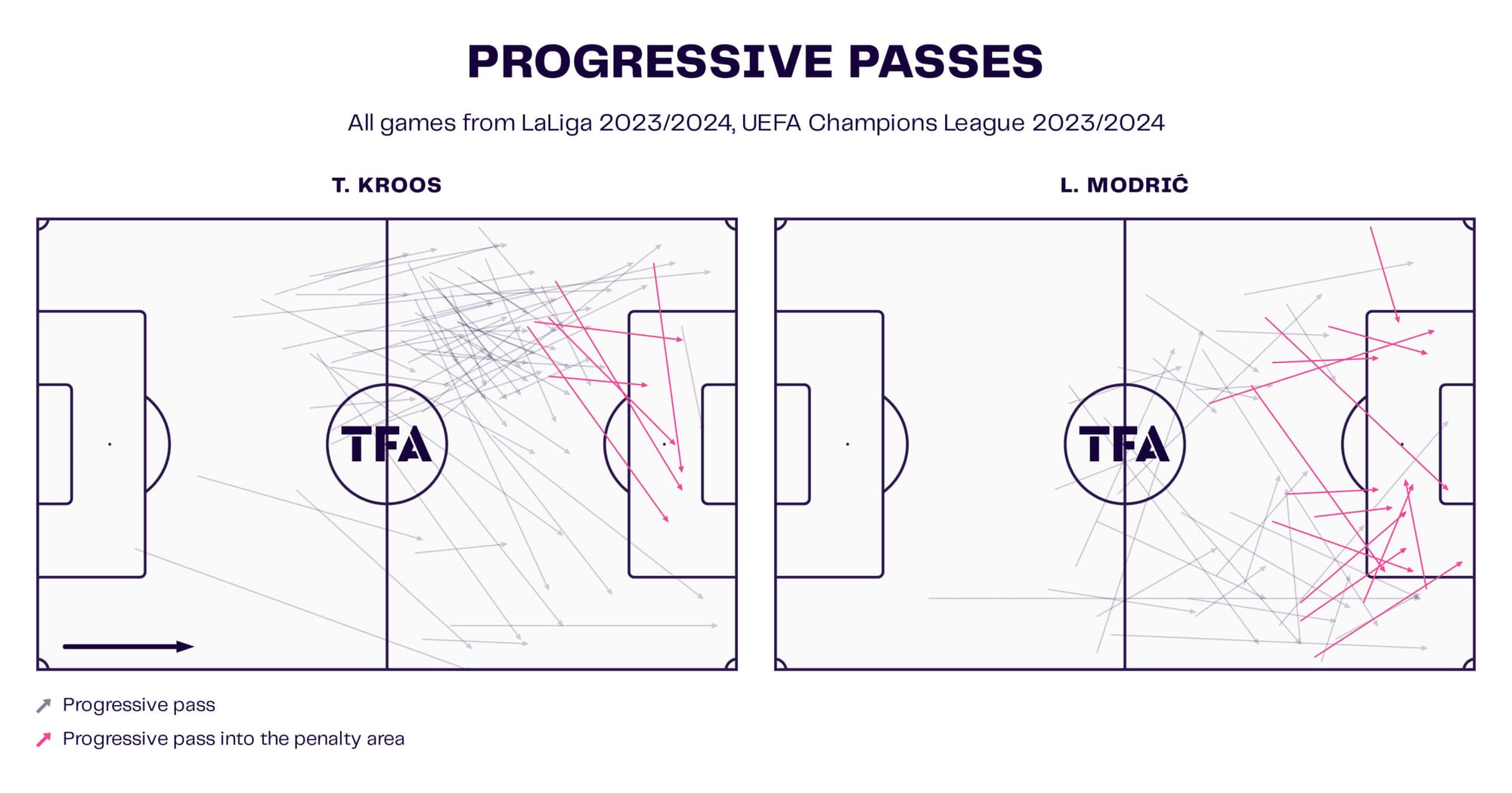
The heart of the so-called relational attack of Real Madrid is built on the quality of Modrić and Kroos; both players are very experienced in self-organising the team on the pitch. In the build-up phase, Kroos is the most important player as he always drops down to the left side — so is always outside of the opposition’s shape, thus allowing him to face the more significant part of the pitch without the opposition pressuring him. The viz shows he has a crazy amount of progressive passes on the left flank, plus some switches.
On the other hand, Modrić enjoys playing on the right side more, although he could also join the attack on the left flank. This is because of the freedom he was given to roam instead of following the references of positional grids.
The Croatian international is also a more influential player in the final third, especially helping the team to enter the penalty box on the right side. But since both players have their defensive limitations, Ancelotti appears quite reluctant to start them together anymore.
Kroos is not intense enough defensively to cover the left flank as an ‘8’; it would burden wide players such as Vinícius Júnior or Fran García; Ancelotti wants legs to cover that part in the midfield.
Although Modrić is still in good shape due to his professionalism, in terms of playing style, he is not that type of box-to-box player, so the likes of Camavinga or Valverde could be prioritised in the lineup now.
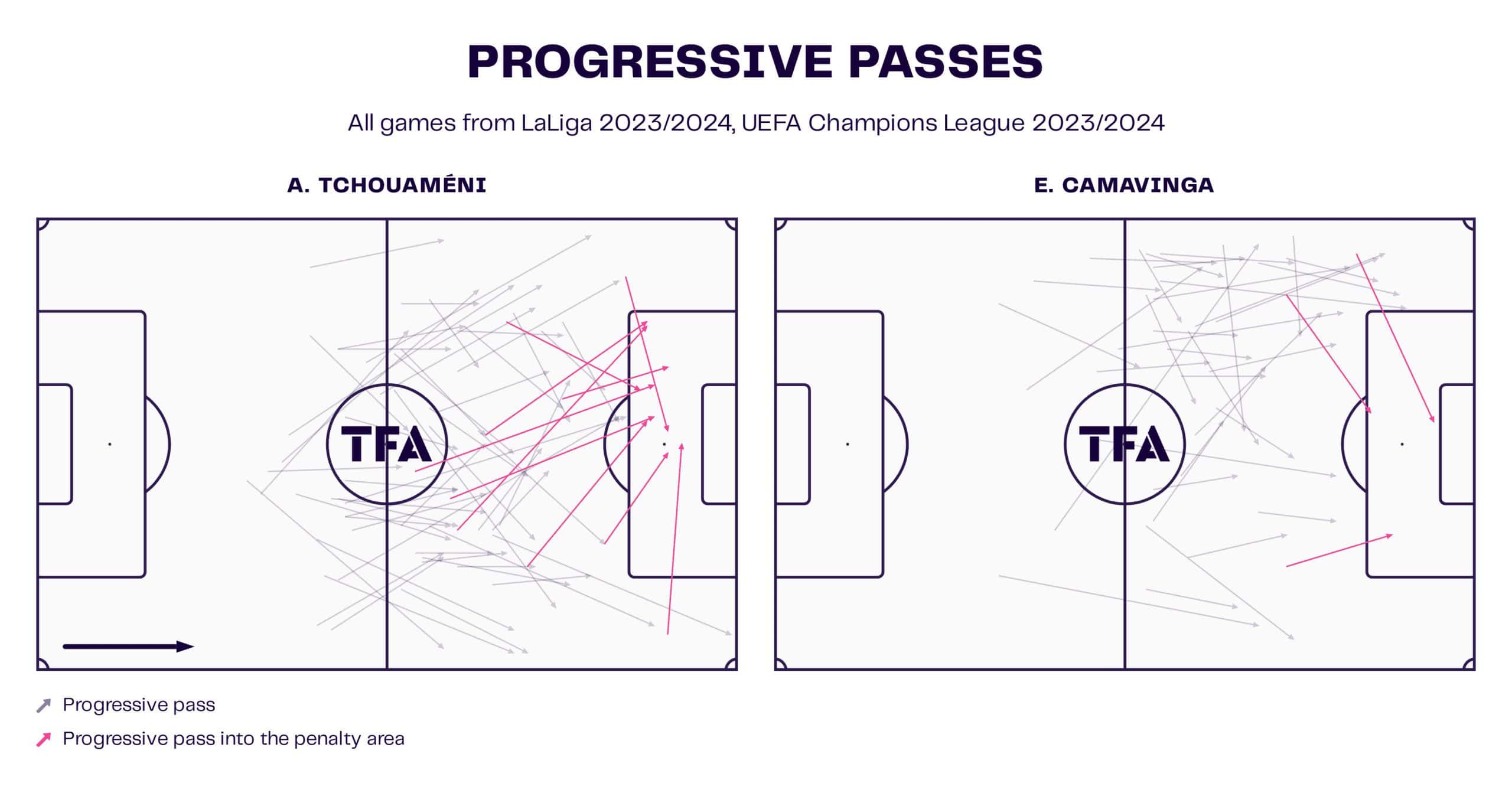
But why could Ancelotti not just replace the old midfield with all the talented young players he has? The answer is clear if we also look at the progressive passes of Tchouaméni and Camavinga — no one could replace Kroos’ importance on the left flank during the possession phases.
While Tchouaméni is quite good at passing the ball forward, Camavinga is another type of player; while the passing game is not his best trait — the former Rennes player offers other services to the team.
In the attacking third
We haven’t mentioned Bellingham and Valverde much because neither gets so deep in the build-up. They were constantly impacting the game closer to the penalty box.
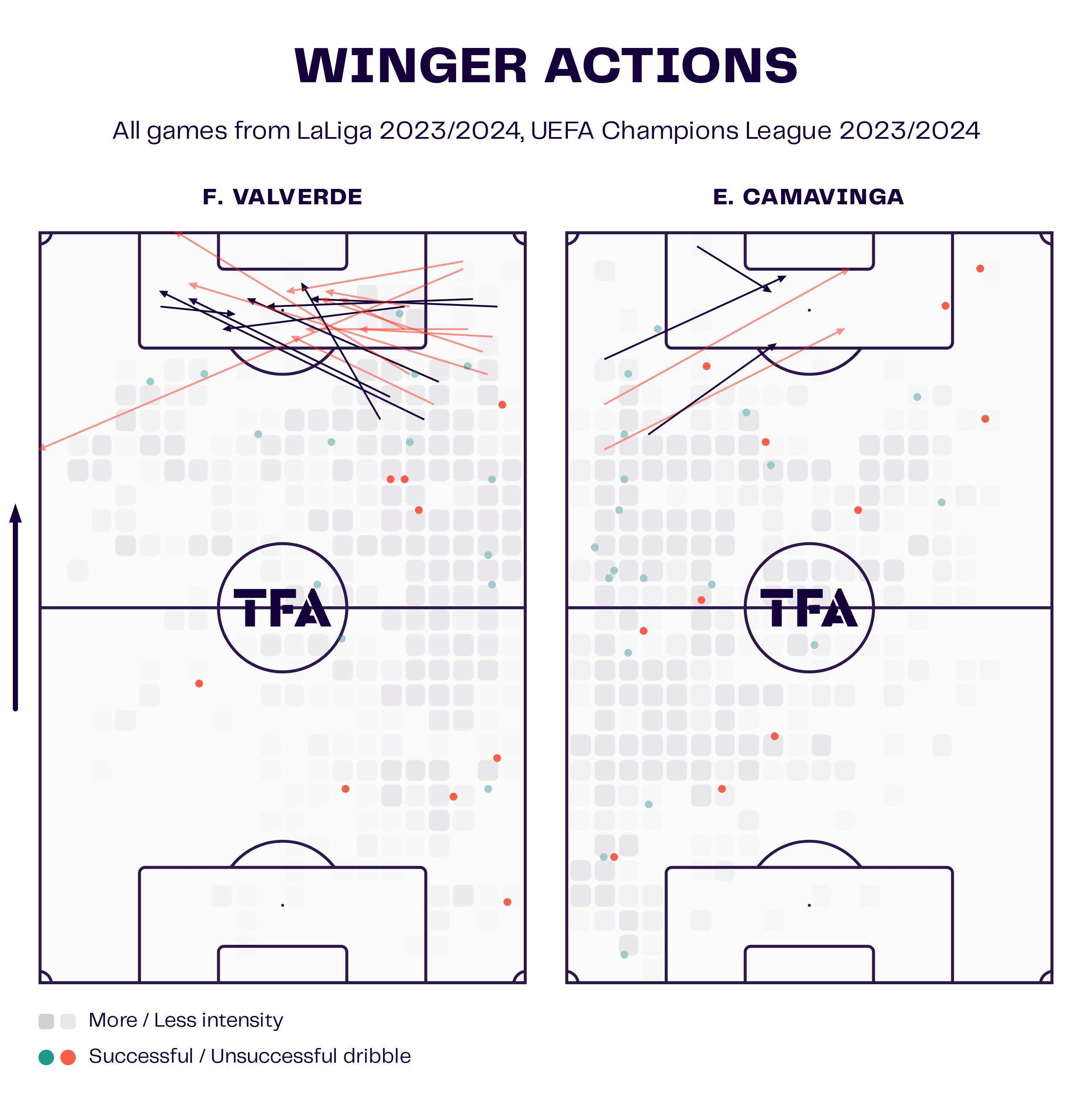
From this viz comparison, we can observe apparent differences between the right-sided and left-sided ‘8’ of Real Madrid. Although Camavinga also plays as a left-back, occasionally, he is different from the kind of player putting a lot of deliveries into the penalty box, but he enjoys carrying the ball forward.
Comparatively, Valverde offered the right side crosses more often with runs and overlaps or via combinations with Carvajal. It is a stark contrast to the other side.
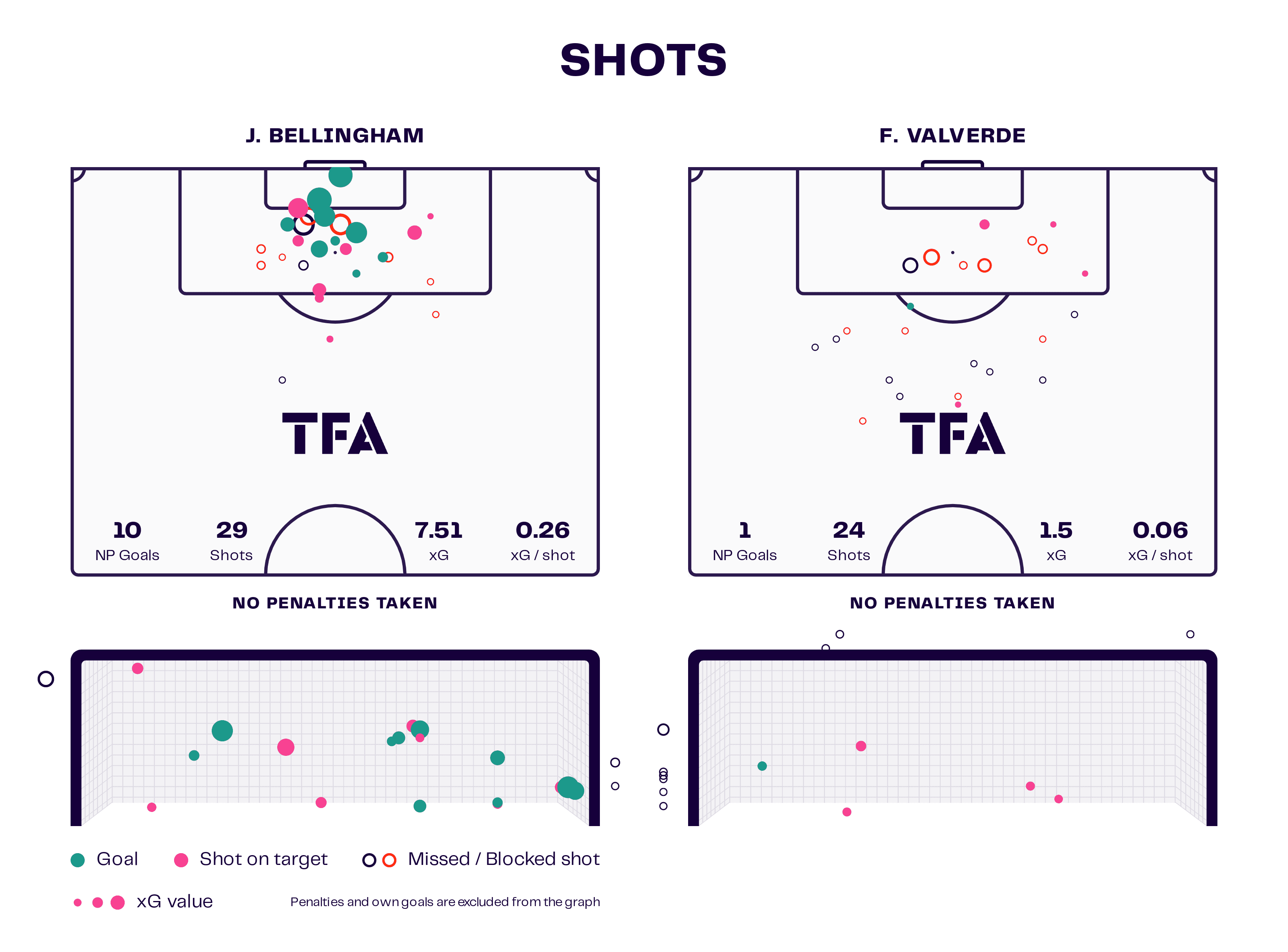
And we could also compare the shot map. Valverde is more of a provider and rarely finds chances in the penalty box. But he has a tremendous shooting range, which could be a powerful weapon for Real Madrid. So far, 15 of his 24 shots were outside the penalty box.
Comparatively, Bellingham performs more like a “fox in the box” who can finish chances thanks to his late runs and intelligent positioning.
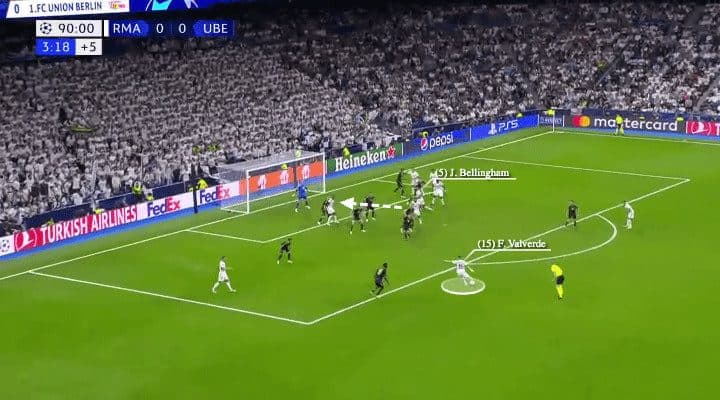
Thanks to Bellingham’s strong impact inside the penalty box, Real Madrid have accumulated plenty of points in tight games when they needed to make a difference. For example, when the game was going to end 0-0 against Union Berlin, Bellingham caught the rebound and scored the winner. Guess who took the shot? Valverde, the long-shot master.
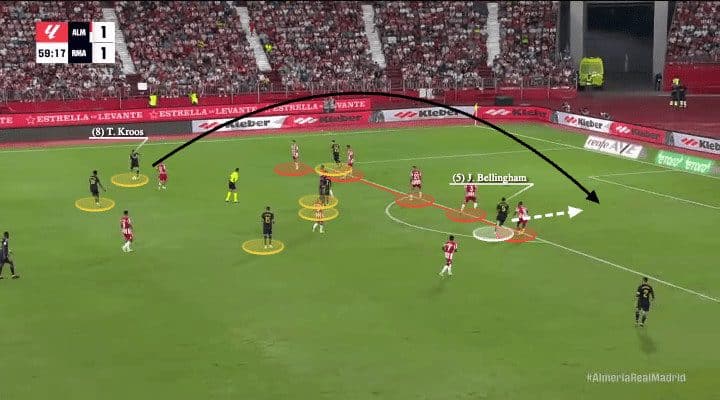
With Bellingham, Real Madrid can also play slightly directly, but as we said, they are more of a relational team and would not want to hold a structure to drive its offensive plays. Therefore, Bellingham could thrive with his runs behind. The young English international is extremely good at sensing the weak channel of the opponent, while Real Madrid are full of great passers. The goal vs Alméria was proof — Kroos picked out Bellingham on the far side gap.
After Benzema’s departure, Bellingham’s involvement in the penalty box is essential. Joselu is unlikely to score as much as the Frenchman, so it would be great if Bellingham could take some responsibilities in this part. But that does not mean this is all he can do. In the future, we could see an even more all-rounded Bellingham, maybe in deeper areas.
Defensive concerns
Despite being dynamic in the attacking side and conceding only six goals in the first nine games (the fewest among all La Liga teams), we still discovered Real Madrid are yet to find the right balance when defending their penalty box since the departure of Casemiro. This section will explain why they keep conceding the same type of chances game after game.
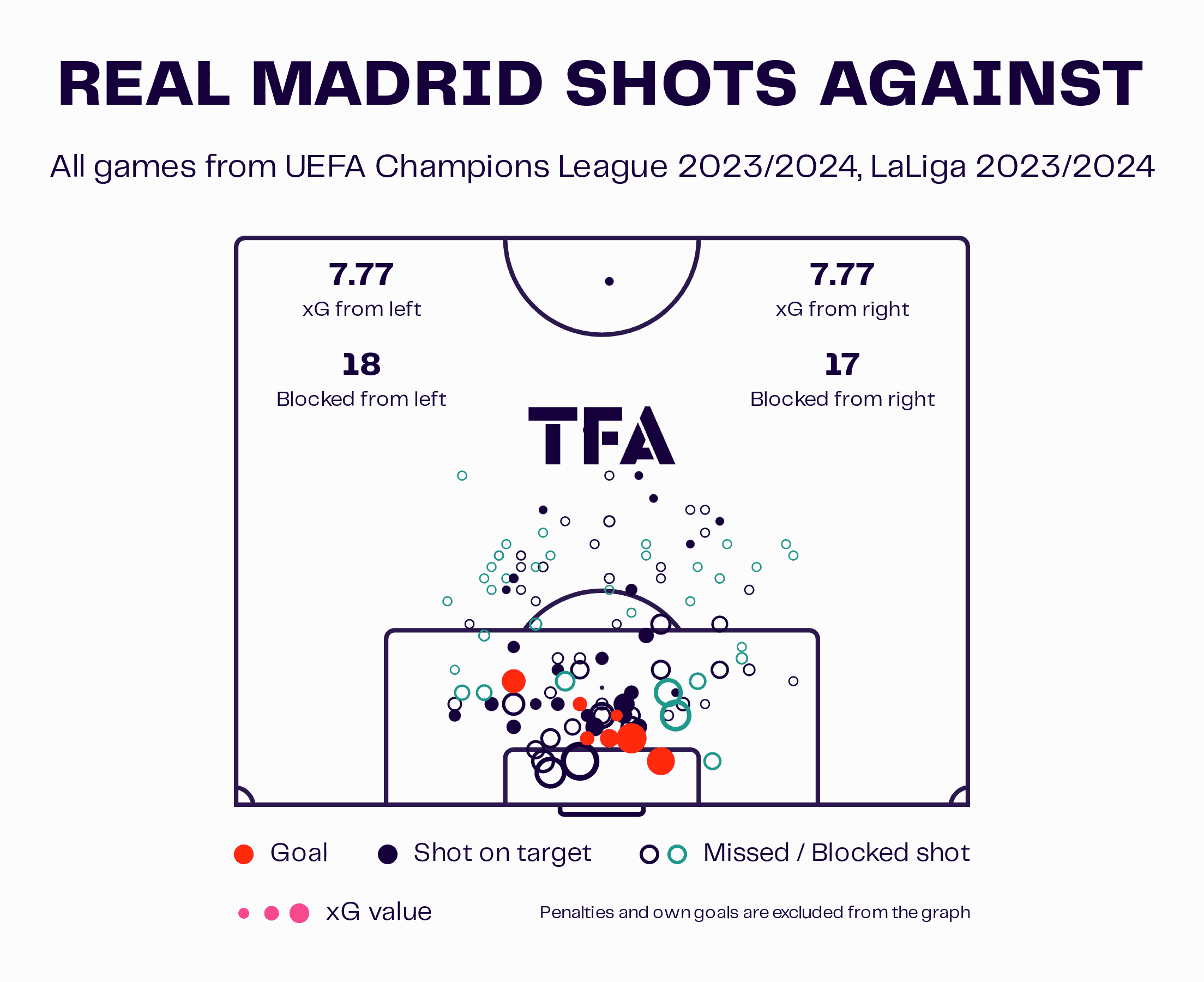
When we look at the viz, Real Madrid’s weak spot is prominent. They are poor at defending the space between the six-yard box and the penalty spot; those areas see goal chances conceded from crosses, and they conceded most of their goals this season. Then we can praise them for defending outside the box well and blocking long shots, but the area highlighted remains a concern.

Hence, we should go back to watching how Real Madrid used to defend when they had Casemiro on the pitch, and the Brazilian defensive midfielder had an excellent awareness to cover teammates and fill in the gaps in his own penalty box. This allowed the other Los Blancos midfielders to jump out to press without worrying about the spacing in the box.
For example, Chelsea were crossing in this scenario, and Real Madrid moved out Alaba (LCB) and Mendy to defend the wide space because they wouldn’t want to drag Vinícius to defend in these scenarios. Then, the remaining central defender would be isolated in the box. That’s why the team needed a defensive midfielder to guard those areas or track the runners. Casemiro was, above all, the best in the world in terms of this.
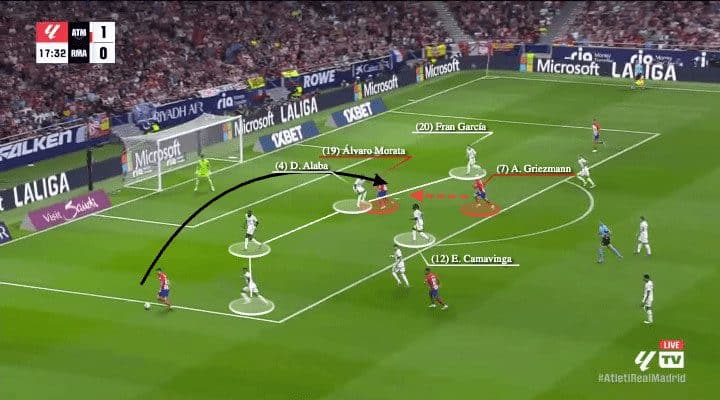
However, no one else in the current squad can replace the defensive output of Casemiro in the penalty box. That is the reason they kept conceding the same type of goals. In the Madrid derby, it was costly as Atlético Madrid just kept bombing the same zone. Álvaro Morata converted one, and in the second goal, Morata occupied Alaba. Then Real Madrid are vulnerable when the opposition have runners from deep (Antoine Greizmann). Camavinga was the defensive midfielder in this game, but he could not defend that effectively.
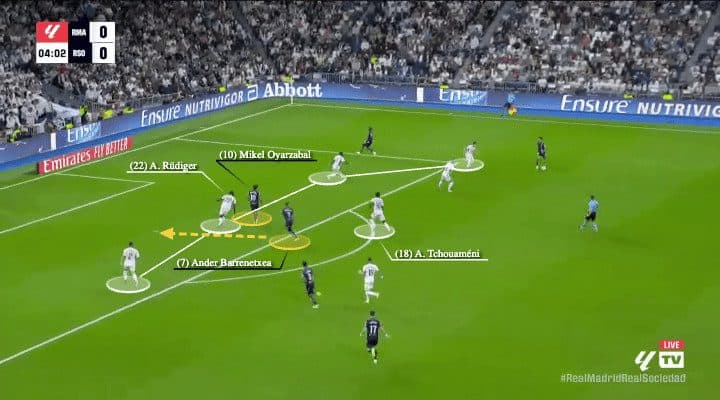
In the away match vs Girona, the home side created a few crossing chances by exploiting this weakness of Real Madrid. And in the home match vs Sociedad, they conceded again similarly. This time, the opponent attacked from the other side, and Rudiger was marking the striker Mikel Oyarzabal; Los Blancos left without a solution handling Ander Barrenetxea as Tchouaméni lost the attention to what was behind him. Then we could also question if Real Madrid should block the crosses better so the ball would not easily arrive at the penalty box.
Conclusion
As we all know, Real Madrid have been one of the most successful clubs in world football history. Even though they did not have the best players in all positions, the ceiling was so high that people would only accept winning and trophies.
This tactical analysis and scout report explained how they worked this season by comparing different midfielders of Real Madrid. Still, it has not always been tactical because Ancelotti is dealing with human beings — such as convincing Modrić that he would be important even though he wouldn’t be in the starting lineup regularly.
It might be the most demanding coaching job in the world, and it would be fascinating to see how this team developed when they arrive at later stages of the season.

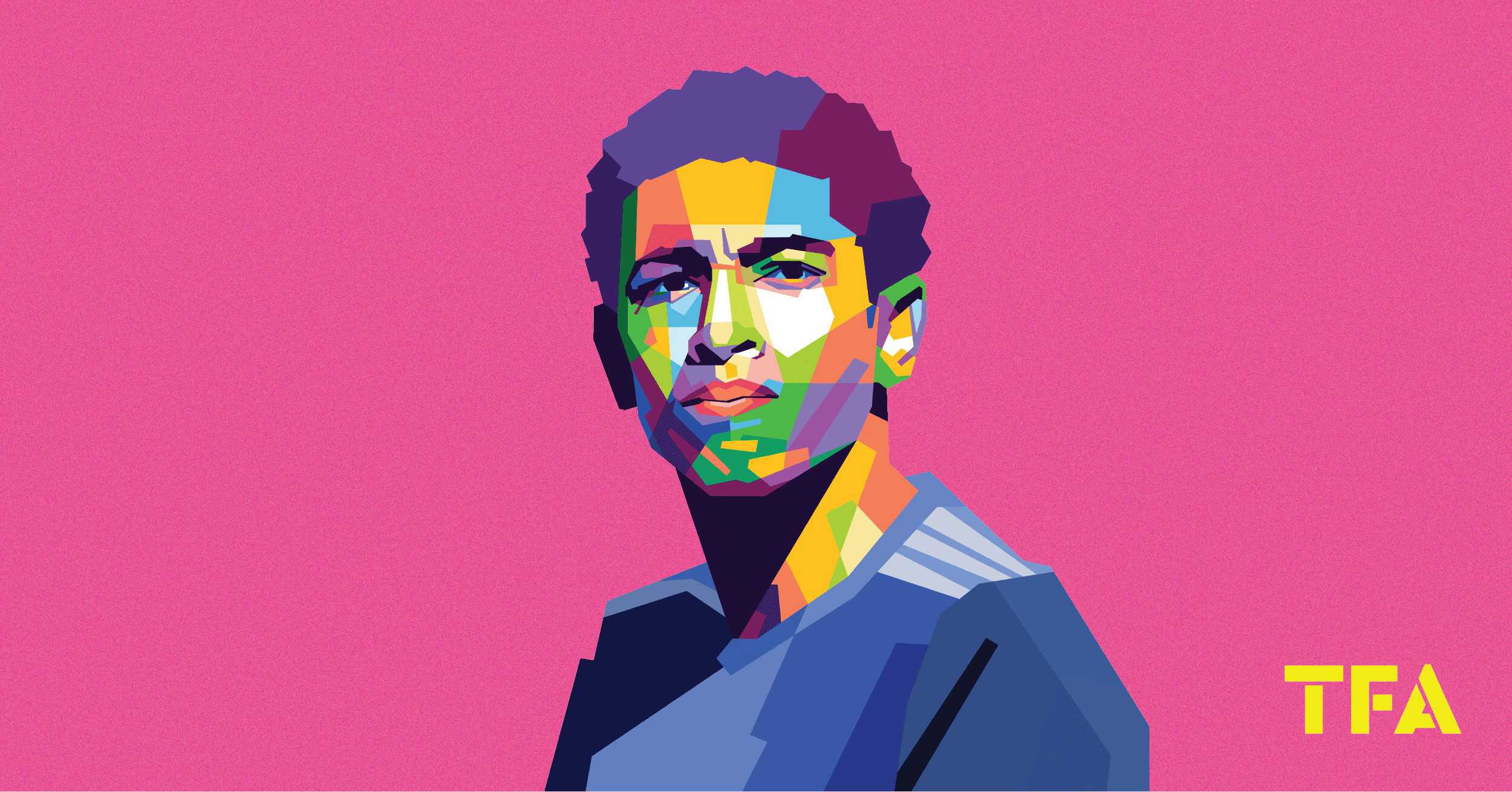



Comments